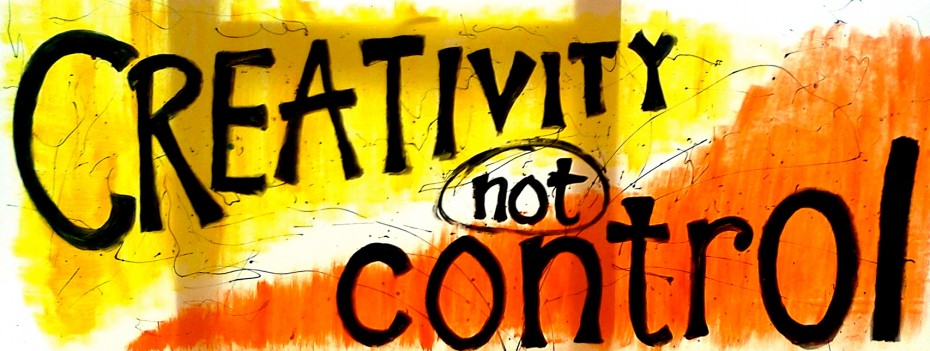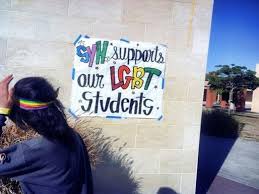Happy Pride weekend everyone! This is a time to celebrate the struggle for sexual and gender equality for all people. However, as this post at ColorLines points out, “for too many queer and transgender folks, the heightened visibility that comes along with Pride can also attract unwanted attention.” Most schools are not in session right now, but for folks like me who are teaching summer classes, it might be a good idea to take a few minutes this weekend to think about how we will address issues of gender and sexuality in the classroom on Monday morning, and how we will deal with any homophobic bullying if it comes up.
Some of our LGBTQ students may be participating in the Pride parades, and other students may be curious, questioning, supportive, critical, or hostile after seeing the parades on TV or on the streets. This is a possible teachable moment, a chance to build solidarity and awareness in the classroom, as long as we prepare ourselves to facilitate respectful and meaningful discussions. This post will attempt to help with that, and will also share some suggestions for how to approach these issues year round.
Let’s start with some context
As Colorlines reports,
“Across the country, recent hate crimes against members of the queer community have made national headlines. In New York City, the murder of 33-year-old Mark Carson in the iconic West Village neighborhood prompted some of the largest rallies for LGBT rights that the city’s seen in years.”
Unfortunately, this kind of oppression is rampant in US. schools:
“According to recent gay bullying statistics, gay and lesbian teens are two to three times as more likely to commit teen suicide than other youths. About 30 percent of all completed suicides have been related to sexual identity crisis. Students who also fall into the gay, bisexual, lesbian or transgendered identity groups report being five times as more likely to miss school because they feel unsafe after being bullied due to their sexual orientation. About 28 percent out of those groups feel forced to drop out of school altogether. Although more and more schools are working to crack down on problems with bullying, teens are still continuing to bully each other due to sexual orientation and other factors.”
As teachers, how can we confront this bullying and build solidarity with our LGBTQ students? The federal Department of Education announced this week that it is proposing that schools collect data about anti-gay bullying, in the hope that this will encourage teachers to intervene more directly to stop it. Some teachers might grumble that this is just one more top-down imposition pushing us to do the impossible with dwindling resources. But we should be confronting bullying anyway – out of care for our students, not because of the feds. And if we don’t have the resources to do this, we should organize ourselves to demand access to them.
When our students say “that’s so gay”

These ads are witty, but they miss the problem: people don’t say “that’s so gay” because they’re ignorant, they say it because gay people have less power in the classroom; that is what needs to change.
This document by the San Francisco Unified School District contains some useful suggestions for how we can respond when we hear students say things like “that’s so gay”, referring to something they don’t like. This is not a matter of policing students’ language; it is a matter of power. Once, one of my students described a particular rapper he didn’t like as a “faggot” and I challenged him on it. Instead he said, “okay, then… he’s a homosexual.” This doesn’t make it any better -the underlying assumption is still there: homosexuality is synonymous with weakness and gay folks are considered a group that is easy to dominate or ostracize.
In other words, what matters are the power dynamics behind the language. Teachers need to be perceptive to see how students use words in social context, and to challenge them at this level; this is much more useful than verbally scanning for certain slurs and banning them from the classroom without discussion. The root problem is that many students see LGBTQ identity as something negative, and LGBTQ people as legitimate targets of harassment and bullying. So they can casually refer to music, books, tests, or people they don’t like as “gay” without really thinking about it. This is what needs to be challenged. If the teacher remains silent, this sends the message that the school as an institution is validating the dominance of straight students over LGBTQ students. Our silence is not neutral; it screams our casual, flippant endorsement of social relations that make the classroom less accessible to LGBTQ students. It contributes to a culture of silence where LGBTQ students might be less likely to come to us for support if they are facing bullying. For all of these reasons, we should speak up.
Of course, this is a process over time; we can’t just harshly call out our students and then walk away. We need to build respectful relationships with our students so that they will actually care when we explain why we think they should change their behavior. A big part of that means listening to what they say and taking their ideas seriously on a daily basis; that way, if we challenge their language they won’t perceive it as us just shutting them down or imposing our politics on them, which happens all too often in schools. Also, LGBTQ students are not passive in these situations; they are not voiceless victims who we need to save. If we have all built an overall classroom culture based on respectful discussion, then students will hopefully have the confidence to speak up and call out homophobic language or behavior themselves. This can be more meaningful than the us as teachers lecturing about it, and if students speak up we should affirm that. However, if noone does, we have a responsibility to intervene and should not hold back out of fear of imposing our views on the class.
“It gets better”?
Mainstream, middle class gay rights approaches to school bullying often emphasize the message of the “It Gets Better” videos; these videos aim to tell youth that they can go on to overcome this bullying and can achieve respected middle class lifestyles as they get older. This message was taken up by the Seattle Police, an institution that spends far more time sending students to juvie based on racial profiling than it does defending any of them from anti-gay attacks. (The SPD’s stance was parodied in this video after a case of police brutality at last year’s Seattle pride.)
In any case, the “it gets better” message overlooks the particularly devastating effects of bullying on transgender folks, from higher suicide rates to long-term unemployment. It also overlooks the fact that a middle class, respectable lesbian or gay lifestyle is increasingly unattainable for most working class LGBTQ youth. The ongoing economic crisis is driving up the youth unemployment rate and is hitting non-white youth the hardest.
This will not change through positive thinking, it will only change through struggle against the system. As my friends wrote during last year’s pride: “it doesn’t get better, we rebel to make it better.” The “it gets better videos” make it seem like students can simply ignore the bullying in order to focus on getting the academic skills they need from school in order to go onto college and a rewarding career. But given the socioeconomic reality most of our students are facing, they need more than pre-professional academic skills. They need classrooms where they can learn how to organize, struggle, and fight for themselves and each other.
As teachers, we can start by learning and teaching the history of struggles such as the Stonewall Riots which kicked off the LGBTQ liberation movement. This was not a court case conducted by lawyers or a parade organized by well-funded nonprofits with middle class leadership. It was an uprising started by working class queer folks, including transgender folks and people of color, fighting against police brutality.


Discussion